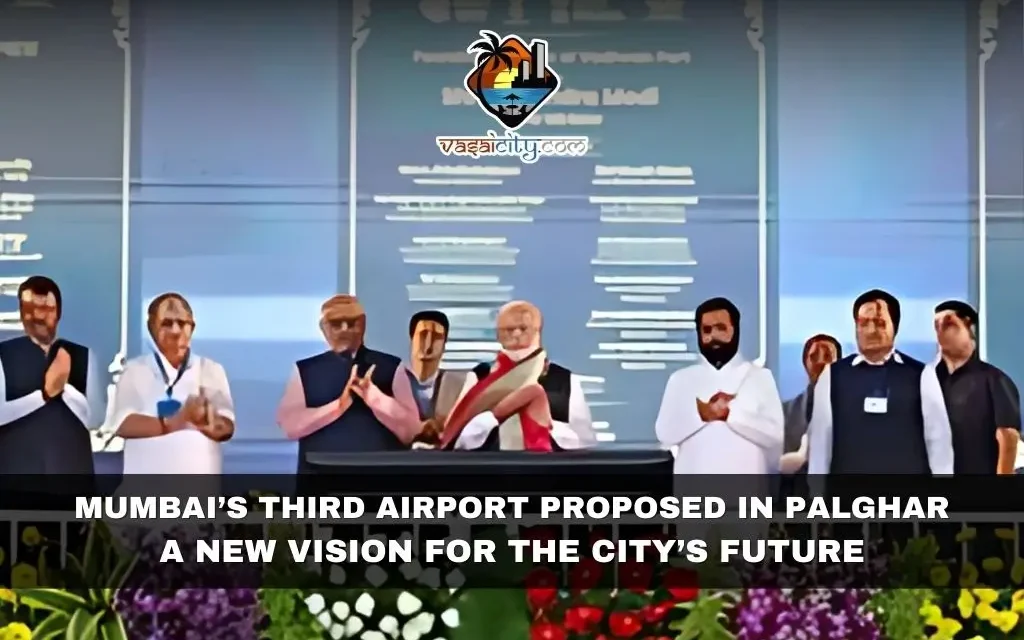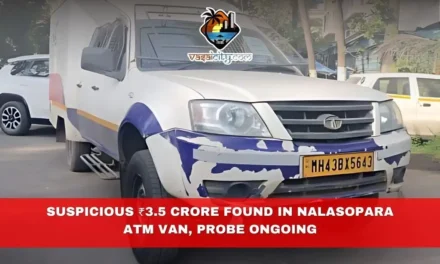In a significant development for the future of Mumbai’s infrastructure, Deputy Chief Minister Devendra Fadnavis has proposed the construction of a third airport for the city, this time in Palghar. The proposal was made during the foundation stone-laying ceremony for the Vadhvan port on Friday, where Fadnavis suggested building the new airport on reclaimed land near the upcoming port.
With the existing Chhatrapati Shivaji Maharaj International Airport already one of the busiest in the country and the Navi Mumbai International Airport slated to open in March 2025, Fadnavis highlighted the urgent need for further expansion of aviation infrastructure to accommodate the city’s growing demands. “Mumbai will need a third airport in the coming years, and at several places around the world, airports are built on reclaimed land,” said Fadnavis. He urged the Central government to consider the proposal of constructing this new airport on reclaimed land near Vadhvan port, a suggestion made in the presence of Prime Minister Narendra Modi.
Fadnavis’s proposal received immediate support from Maharashtra’s Chief Minister Eknath Shinde, who endorsed the idea during his address at the same event. Both leaders emphasized the transformative potential of a third airport, projecting that it would significantly enhance Mumbai’s connectivity and economic growth.
The Need for a Third Airport
Mumbai’s current international airport is already operating at near full capacity, handling over 45 million passengers annually. The upcoming Navi Mumbai International Airport is expected to ease some of this burden, but experts predict that even this additional capacity may not be sufficient to meet the city’s future needs. With Mumbai’s rapid urbanization, expanding business opportunities, and increasing tourist footfall, aviation experts have long been advocating for a third airport to ensure the city’s continued growth.
The idea of a third airport is not new. During the tenure of the previous Maharashtra Vikas Aghadi (MVA) government, then Chief Minister Uddhav Thackeray had also floated the idea, suggesting that the state consider locations in Palghar for the new airport. At that time, the administration was exploring potential sites at Kelva-Mahim and Dapchari, both situated in Palghar district.
Why Palghar?
Palghar, located around 97 kilometers from Mumbai, is an emerging district that shares its border with Gujarat. Spanning from Vasai-Virar to Dahanu, Palghar is known for its scenic coastline and growing infrastructure potential. The district has seen significant developmental efforts in recent years, including the upcoming Vadhvan port, which promises to be a major industrial and logistical hub.
Fadnavis’s choice of Palghar for the proposed third airport is strategic. Building the airport on reclaimed land near Vadhvan port would leverage the district’s expanding infrastructure and proximity to both Mumbai and Gujarat, providing a crucial link for business and tourism. Additionally, constructing the airport near the port would create an integrated transport network that could drive substantial economic activity in the region.
One of the key reasons for selecting reclaimed land is the lack of large, available spaces near Mumbai that can accommodate a new airport. The concept of building airports on reclaimed land is not unprecedented; it has been successfully implemented in several cities worldwide, including Hong Kong, Singapore, and Osaka. Such projects often come with their own set of challenges, including environmental concerns and higher construction costs, but they also offer solutions in densely populated areas where land is scarce.
Support and Challenges
While the proposal has garnered support from top state leaders, the plan will require approval from the Central government, detailed feasibility studies, and considerable investment. Environmental clearances and land acquisition are likely to be major hurdles. Reclaimed land projects often face scrutiny from environmentalists due to their potential impact on coastal ecosystems and marine life.
Additionally, the financial implications of constructing an airport on reclaimed land are significant. However, the economic benefits of a third airport could outweigh the costs, as it would enhance Mumbai’s position as a global business and travel hub. The project could generate thousands of jobs during construction and operations and boost tourism, trade, and investment in the region.
Looking Ahead
Fadnavis’s proposal marks the beginning of what could be a transformative journey for Mumbai’s aviation landscape. The third airport has the potential to redefine air travel in the region, ensuring that Mumbai continues to grow and meet the demands of its citizens and businesses. For Palghar, this project could be a game-changer, bringing in unprecedented investment and development.
As the city prepares for the operational launch of the Navi Mumbai International Airport in 2025, the vision of a third airport reflects a forward-looking approach to infrastructure planning. Fadnavis and Shinde’s support for this project indicates a unified commitment to Mumbai’s future growth, positioning the city to remain competitive on the global stage.
The plan is still in its early stages, and much will depend on the Centre’s response and the outcome of feasibility studies. However, the proposal for a third airport in Palghar signals an ambitious and necessary step toward future-proofing Mumbai’s aviation capacity. With careful planning and execution, this airport could become a landmark project that supports the city’s aspirations for decades to come.
Mumbai’s third airport is not just about accommodating more flights; it’s about securing the city’s future as a vibrant, connected, and prosperous metropolis. The journey from proposal to reality will be complex, but if successful, it promises to deliver immense benefits to the region and its people.














